Will the city of Amsterdam soon build “a labyrinth city” beneath its canals?
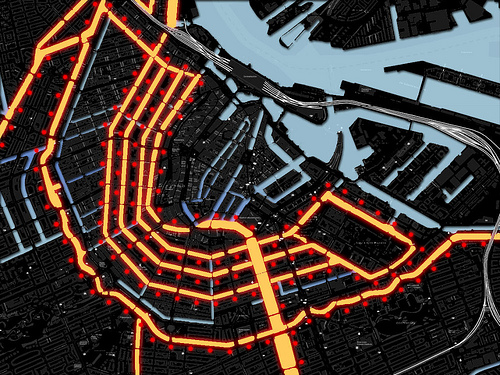 [Image: A new underground city for Amsterdam, by Zwarts & Jansma].
[Image: A new underground city for Amsterdam, by Zwarts & Jansma].
Maybe so.
According to World Architecture News, “Newspapers around Europe have been reporting on the scheme, which requires the city’s canals to be drained to allow the construction of a vast underground mixed-use complex beneath.”
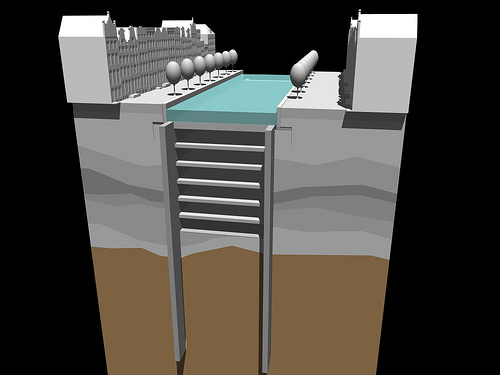 [Image: Underground Amsterdam by Zwarts & Jansma].
[Image: Underground Amsterdam by Zwarts & Jansma].
It’s an idea by Zwarts & Jansma architects, whose plans includes excavating “a range of underground facilities… at various levels below the city.”
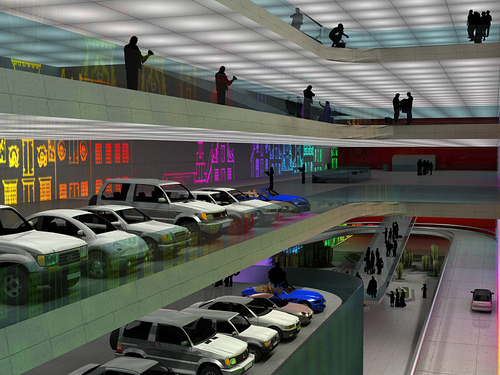
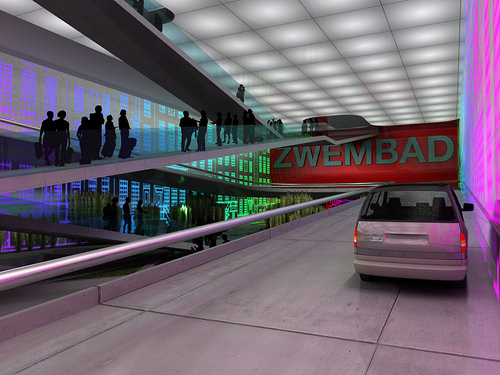
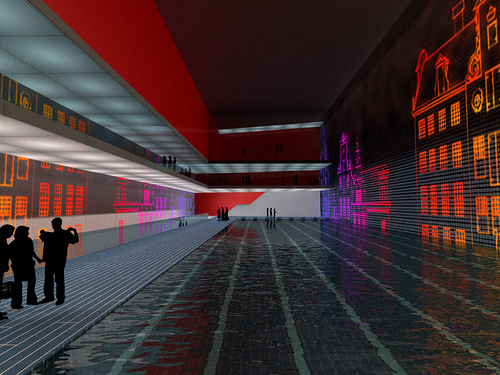 [Images: Zwarts & Jansma].
[Images: Zwarts & Jansma].
Apparently, the project is even technically feasible:
The Dutch capital may be unique as its geology lends itself to the technical feasibility of this scheme. Moshé Zwarts explained, “Amsterdam sites on a 30-metre layer of waterproof clay which will be used together with concrete and sand to make new walls. Once we have resealed the canal floor, we will be able to carry on working underneath while pouring water back into the canals. It’s an easy technique and it doesn’t create issues with drilling noises on the streets.”
But does that mean Amsterdam should really build it? For instance, World Architecture News is quite opposed to the project – yet the Telegraph reports that “the project has been approved by Amsterdam’s city council. Construction work, lasting up to 20 years, is expected to begin in 2018.”
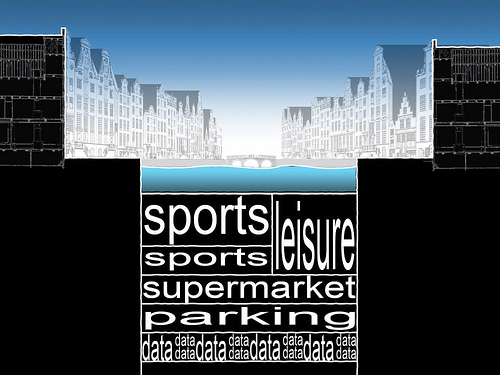 [Image: Zwarts & Jansma].
[Image: Zwarts & Jansma].
Maybe they should build it and use it as a penal colony. Imagine the escape attempts – trying to get out of the earth.
(Thanks to Alex Haw for the tip!)

Hopefully the plan isn’t to build a huge underground parking garage, as some of the images seem to suggest.
“Leaking Boulevard”
Geoff,
Hate to burst any bubbles here, but I think the Telegraph is misinformed on the plans (or they know something which the rest of Holland doesn’t). The city council has expressed reserves about the plans and does not think it fits in with their plans for the future of the city. For now, these are just the wild wet dreams of Strukton, the company who presented the plans.
No bubbles burst – the idea seems completely absurd to me. I just like underground cities… But the project seems like forced creativity to me, and, to some extent, like a media stunt.
Now, if Amsterdam wanted to build upward, into blimps…
Blimps are the new underground.
As a resident in amsterdam, I’d say cars are one of the major annoyances I have to face on a dailey basis.
So the idea of huge underground parking garages doesn’t sound so bad to me actually, it would create a lot if space in the small cannal streets, plus it might reduce noise and pollutants from cars within the city.
I hope they don’t built it… I have been in a kind of underground mall in Paris and it was a bit claustrophobic. This would be the same or even worst, because there is water above you.
Hooray for the return of 10 Quick Links!
Would it be compartmentalized, in case the canal floor was breached?
Hooray for the return of 10 Quick Links!
I had to take them down for a few hours because my RSS feed wasn’t feeding right… But I’m glad you missed them! Means at least someone finds them useful.
Even in the optimistic conceptual phase, the numbers don’t come close to adding up:
“a £7.4 billion underground city providing one million square feet of underground retail, leisure and parking facilities.” [i.e. £7,400 per square foot]
“a garage space can cost as much as £74,000” [i.e. somewhat less than £7,400 per square foot]
Also, why the grand scale? Is there some bizarre engineering reason pushing them to do this across all of Amsterdam, rather than starting with a single canal?
‘Tis a spelunking Frank Lloyd Wright
Stay on groovin’ safari,
Tor
Thank you for sharing this project, without the convenience of the internet, I probably would never have discovered it. Whether or not it actually gets built, I think it is very innovative and inspiring. The concepts of this proposal are absolutely worthy of great contribution toward larger running forums in society concerning urbanism and utopias. While this project is easily discussed among the architecture industry, projects of this scope and social relevance should be accessible to debate amongst the greater common society.
One thing that is rather disappointing however, is how low-key and unpublicized this project seems to be. While the internet certainly helps to communicate and network information at exponential rates, projects like these do not reach a broad enough audience with ease by means of the internet and blogosphere alone. In fact, I only found this project through proactive searching and browsing. The fact that I do not live within nor near the immediate physical region of the project site nor architect, and that the architect is not of popular international recognition further limits the project’s range and spectrum of influence
Architectural groups, think tanks, and firms could reach a broader audiences and gain more exposure by realizing their ideas in media that is mass produced and widely accessible in the way that popular science fictions works, such as the Matrix, Minority Report, and I, Robot, among others do. These Science Fictions are able to reach vast, international audiences, and after all, they present conceptions of the future in the same way that architectural proposals do. In fact, architectural proposals of cities are often developed in further detail than Science Fictions, which must often sacrifice detailed development of technology and architecture to concentrate on plot and narrative. While the majority of architecture is discussed only within the industries own circles, the conception of architectural projects as a Science Fiction could project ideas into mainstream society and encourage dialogue.
j i c, I entirely agree with you about film, science fiction, and architecture, and the media exposure that comes from experimenting with the first two.
Well it is absolutely obvious the Telegraph is overimaginative – I think anybody can see that (and as others stated before, no Dutch sources have mentioned this at all, and obviously it wasn’t taken very seriously anyway). But assume we have to see it more as a ‘concept-project’ – like a concept-car, partly a media stunt and partly exploring new possibilities (which might be a very typical (and valuable) aspect of a Dutch approach to problems anyway). But especially looking at it from this angle it is incredible to see this office showing so little understanding of the issue they try to approach – however Koolhaas concept of ‘culture of congestion’ might be debatable in many cases – stating the most effective way of killing urbanity would be solving it’s congestion – the very one city I would say it is undoubtly true for would be Amsterdam. The situation that it is inpossible to drive, own or park a car virtually anywhere in Amsterdam (Amsterdam is simply optimised on the axiradius of bikes) – is the very reason of it’s extraordinary urbanity. And the great thing is that it does not significantly decrease the mobility of the inhabitants, nor does it increase treir travel-time – it just simply is a more favourable balance. Really, I couldn’t imagine a worse sollution for a rather non-existent problem.
It is great to have ideas for solving problems in the big metropolis, to invite them to see a proposal developed by our urban-minimal equipment on the transformation of urban santiago the year 2030 …
http://www.a-minimal.com/foc.htm
It seems like it wouldn’t add to the city so much as create a new city underneath, with its own patterns and rules. If rising sea levels ever rendered the existing city uninhabitable, though, inherently watertight structures below or (well) above ground would be the only habitable places left in the vicinity.
That makes me think. Well were are talking about the low country after all right. So, it’s not inconceivable that what could be is an invisible city, from the surface, excepting a few snorkels. You would pull in to the city on a boat, get off on the top floor of the tallest building poking just above the surface and look all around. What you see are some tubes and lights and a couple barge-like quais. And the vast Atlantic seaboard lagoon that is what was the Netherlands stretches to the horizon, with glimpses of dikes.
You enter the underwater city through the roof maintenance access of this dock/tower.
This strikes me as a bad idea. Holland is already struggling with the sea, and climate change won’t likely make their fight any easier.
…So what better idea than to dig down? Hello water table? Seems implausible and technically not feasible.